Any avid dorama viewer will already have seen this by now and surprisingly I also regret not watching this right away, as it's actually better than I expected. Nazotoki wa Dinner no ato de is an adaptation of two novels of the same name written by humor mystery author Higashigawa Tokuya and while there's a lot of comedy in it (apparently even more so in the TV version), it also entertains with solid mysteries.
Houshou Reiko is the daughter of the wealthy Houshou family, but she is also a police detective. She is not very good at solving crimes though, even if she's certainly not as dumb as her boss Kazamatsuri Kyouichi, who seems to be more interested in his own car company and women. Fortunately, her butler Kageyama is not only an otaku of detective fiction, manga and tokusatsu-series who happens to not only be good at serving roast beef for every damn dinner cooking and other chores, but also at doing Reiko's work, playing the role of the detective figure in the novels and this series. Most episodes begin with a story of crime and Reiko and Kazamatsuri arriving at the scene, then switches over to Reiko at dinner telling Kageyama about the investigations and how they are not advancing in their search for the culprit. Of course Kageyama always knows the answers to all the mysteries and promises to explain the culprit's identity in a way even Reiko will understand... but only after the dinner.
Apart from the last two episodes each one consists of one case that is made to fit into 45 minutes, which means the crimes aren't overly complicated or difficult but challenging enough and definitely entertaining fair play for the viewer.
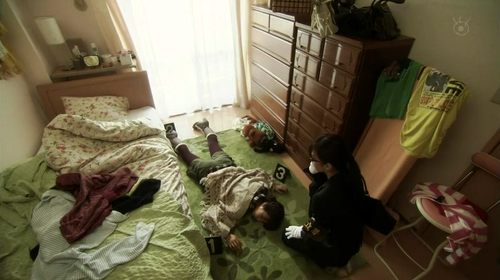 The series starts out with 殺人現場では靴をお脱ぎください (Please take of your shoes at the crime scene), which features a strangulated victim with her shoes on in her own apartment. Yes, in Japan having your shoes on inside of an apartment usually is inexcusable... And thus it poses the question how the victim got there in that state. It's a rather simple problem with a rather easy solution and I doubt anybody won't find out who the culprit is, but the clues were so logically leading to the answer that I got interested in watching more of this series.
The series starts out with 殺人現場では靴をお脱ぎください (Please take of your shoes at the crime scene), which features a strangulated victim with her shoes on in her own apartment. Yes, in Japan having your shoes on inside of an apartment usually is inexcusable... And thus it poses the question how the victim got there in that state. It's a rather simple problem with a rather easy solution and I doubt anybody won't find out who the culprit is, but the clues were so logically leading to the answer that I got interested in watching more of this series.殺しのワインはいかがでしょう (How about a murderous wine?) features a classical poisoning murder which, like the preceding episode, turns out rather simple and guessable, but it's a bit more challenging this time. Furthermore, while the characters in the first episode were pretty much ciphers for the puzzle to work out, this time the outcome is actually pretty unexpected and cruel.
二股にはお気をつけください (Please be careful when two-timing) is one of the better episodes, featuring a naked corpse in a hotel room and posing the problem of differing testimonies about the unknown persons entering and leaving the room around the time of the murder. I haven't read Ellery Queen's The Spanish Cape yet so I don't know whether I can say anything on the quality or uniqueness of this kind of mystery, but this episode and its solution convinced me to continue watching this whole series.
In 花嫁は密室の中でございます (The bride is in a locked room) Reiko attends a wedding party of one of her old friends, who gets to be the bride in the locked room later. She has been stabbed in the back, but is still alive. No veranda or anything else is below the windows and due to certain circumstances Reiko herself becomes the prime suspect. The solution is something I imagine to be working great in text form as well and while it's the same kind of logic as seen in the preceding episodes, the clues are still fair play as long as you pay attention to every detail. For a short story frame, I think this was a very neat locked room mystery and it's also one of my favorite episodes.
アリバイをご所望でございますか (Do you wish for an alibi?) belongs to what's called アリバイ崩し and I'm always wondering how I should call that sub genre in English... well, you have your suspect and you know it must be him so you have to find a way to get around his or her alibi. Not my favorite kind of mystery and also one of the episodes I didn't like so much. It's about a manga author who was stabbed in front of the Kunitachi shrine, the same place where her series' story also begins. She had a long but shaky relationship with the artist drawing her series and he was telling her he wanted to stop drawing for her, even though the series only needs the final chapter to be concluded. He's believed to have killed her in quarrel after that so you have to destroy his alibi. As I said, I find it rather boring when you already know the culprit, but I guess for anyone not having a problem with that kind of mystery, the solution is alright.
Fortunately, with 綺麗な薔薇には殺意がございます (Beautiful roses have murderous intent) follows a rather Queen-ish mystery in a more Yokomizo- or Carr-like setting placed in present times. The victim is found on a rose-bed in a glasshouse next to a mansion, which is connected to a girl's curse that manifests in the roses and kills anyone who cuts himself on them. While it seems like the victim was killed in her own room, why did the culprit bother to move her onto the rose-bed? Of course the answer to that is rather easy once you figure out the reason that curse is included in the story, but the construction and the clues are not as simple as in some of the other episodes and overall I was pretty satisfied.
殺しの際は帽子をお忘れなく (Do not forget the hat at the time of murder) is by far the most funny episode! Reiko hurts her back and has to stay at home, but Kageyama uses the power of the Houshou group so that Reiko can watch the investigations from afar, having her personal hatter visiting to show her new hats while being confined to her couch. The case is about a fashion designer drowned in her own bathtub and exactly one of her hats missing from her collection. The murderer is pretty obvious but the logic behind the missing hat and the way it was connected to the suspects was brilliant. I think I would have never come up with that myself since, as the mad hatter (yes, Kageyama puts on some bunny ears and they play mad tea party...) points out, usually hats are a rather useless thing simply used to decorate your head.
In 殺意のパーティにようこそ (Welcome to the murder party) Reiko is invited to a party where a famous actor, and one of Reiko's old schoolmates, announces his marriage. His sister is found almost killed under stage props and while she's being carried to the hospital, she mentions that the culprit was a woman in a red dress wearing a necklace with a red jewel... which applies to several of the ladies present, including Reiko herself. The solution relies on special knowledge in a certain field, which automatically makes me like this less than other episodes which are solvable for anyone.
What a finale! 聖夜に死者からの伝言をどうぞ (A message from the deceased on the holy night) is set in the mansion of famous mystery author Tendou Shizuko who invites her fellow, yet not so amiable mystery authors for a Christmas party. At night, Kenmochi Rumi, who is very successful and said to become the next Tendou, is murdered with a trophy, which seems to be thrown from outside in the garden through a window into the second floor later. Why did the culprit do that and why did Rumi leave an X as a dying message with the ink she used for the script of her next novel? This story seems to be a mix of three stories in the source material, but fortunately don't notice that and everything fits nicely. The case spans two episodes and with this being the only case featuring a false solution and a second murder it's totally justified. In terms of the mystery this is definitely the most entertaining story overall. I just felt a little bit dissatisfied due to a certain inconsistency that comes up when Kageyama points out the definite culprit in the end since a certain aspect is not that logical and significant in the second deduction process once you really think about it. But I can't go into detail without spoiling the culprit of the second solution. Anyway, still one of the best cases in this series and almost as full of twists as Queen's The Siamese Twin Mystery!
At least about half of the episodes should be recommendable in an objective way just taking into account the puzzles as such, but this series is really entertaining overall. When I first read of the adaptation I was rather disinclined by an Arashi-member playing Kageyama and when I started watching I felt kind of annoyed by the character of Kazamatsuri, but the more I watched the more natural and fluent the setting felt to me. The ドS (extremely sadistic) butler and the spoiled and oblivious お嬢様 (high-class family's daughter) are a funny version of the classic Holmes and Watson duo and I never expected the humour to blend so well with the detective fiction part (some of Kazamatsuri's comedy parts even include information needed for the deduction). The soundtrack is also awesome, btw.*
The content of the adaptation seems to differ from the source material after the first episode. This also becomes apparent for those who haven't read the books in the latter half of the series, when specific visual clues where I thought they would have to be handled differently in text form began to appear. It's comparable to Ayatsuji Yukito's and Arisugawa Arisu's TV special series 安楽椅子探偵 (Armchair Detective), but there those visual clues are sometimes extremely hidden and mean... There's also one other story missing from the source material and one of the stories said to be mixed into the final episodes includes another locked room that sounds interesting, so I'll have to check out volume 2 someday. And volume 3 if it ever comes out. To be honest, I could keep on watching this series forever, but making a series like that is impossible.
*other links removed after they became private
In 花嫁は密室の中でございます (The bride is in a locked room) Reiko attends a wedding party of one of her old friends, who gets to be the bride in the locked room later. She has been stabbed in the back, but is still alive. No veranda or anything else is below the windows and due to certain circumstances Reiko herself becomes the prime suspect. The solution is something I imagine to be working great in text form as well and while it's the same kind of logic as seen in the preceding episodes, the clues are still fair play as long as you pay attention to every detail. For a short story frame, I think this was a very neat locked room mystery and it's also one of my favorite episodes.
アリバイをご所望でございますか (Do you wish for an alibi?) belongs to what's called アリバイ崩し and I'm always wondering how I should call that sub genre in English... well, you have your suspect and you know it must be him so you have to find a way to get around his or her alibi. Not my favorite kind of mystery and also one of the episodes I didn't like so much. It's about a manga author who was stabbed in front of the Kunitachi shrine, the same place where her series' story also begins. She had a long but shaky relationship with the artist drawing her series and he was telling her he wanted to stop drawing for her, even though the series only needs the final chapter to be concluded. He's believed to have killed her in quarrel after that so you have to destroy his alibi. As I said, I find it rather boring when you already know the culprit, but I guess for anyone not having a problem with that kind of mystery, the solution is alright.
Fortunately, with 綺麗な薔薇には殺意がございます (Beautiful roses have murderous intent) follows a rather Queen-ish mystery in a more Yokomizo- or Carr-like setting placed in present times. The victim is found on a rose-bed in a glasshouse next to a mansion, which is connected to a girl's curse that manifests in the roses and kills anyone who cuts himself on them. While it seems like the victim was killed in her own room, why did the culprit bother to move her onto the rose-bed? Of course the answer to that is rather easy once you figure out the reason that curse is included in the story, but the construction and the clues are not as simple as in some of the other episodes and overall I was pretty satisfied.
殺しの際は帽子をお忘れなく (Do not forget the hat at the time of murder) is by far the most funny episode! Reiko hurts her back and has to stay at home, but Kageyama uses the power of the Houshou group so that Reiko can watch the investigations from afar, having her personal hatter visiting to show her new hats while being confined to her couch. The case is about a fashion designer drowned in her own bathtub and exactly one of her hats missing from her collection. The murderer is pretty obvious but the logic behind the missing hat and the way it was connected to the suspects was brilliant. I think I would have never come up with that myself since, as the mad hatter (yes, Kageyama puts on some bunny ears and they play mad tea party...) points out, usually hats are a rather useless thing simply used to decorate your head.
In 殺意のパーティにようこそ (Welcome to the murder party) Reiko is invited to a party where a famous actor, and one of Reiko's old schoolmates, announces his marriage. His sister is found almost killed under stage props and while she's being carried to the hospital, she mentions that the culprit was a woman in a red dress wearing a necklace with a red jewel... which applies to several of the ladies present, including Reiko herself. The solution relies on special knowledge in a certain field, which automatically makes me like this less than other episodes which are solvable for anyone.
What a finale! 聖夜に死者からの伝言をどうぞ (A message from the deceased on the holy night) is set in the mansion of famous mystery author Tendou Shizuko who invites her fellow, yet not so amiable mystery authors for a Christmas party. At night, Kenmochi Rumi, who is very successful and said to become the next Tendou, is murdered with a trophy, which seems to be thrown from outside in the garden through a window into the second floor later. Why did the culprit do that and why did Rumi leave an X as a dying message with the ink she used for the script of her next novel? This story seems to be a mix of three stories in the source material, but fortunately don't notice that and everything fits nicely. The case spans two episodes and with this being the only case featuring a false solution and a second murder it's totally justified. In terms of the mystery this is definitely the most entertaining story overall. I just felt a little bit dissatisfied due to a certain inconsistency that comes up when Kageyama points out the definite culprit in the end since a certain aspect is not that logical and significant in the second deduction process once you really think about it. But I can't go into detail without spoiling the culprit of the second solution. Anyway, still one of the best cases in this series and almost as full of twists as Queen's The Siamese Twin Mystery!
At least about half of the episodes should be recommendable in an objective way just taking into account the puzzles as such, but this series is really entertaining overall. When I first read of the adaptation I was rather disinclined by an Arashi-member playing Kageyama and when I started watching I felt kind of annoyed by the character of Kazamatsuri, but the more I watched the more natural and fluent the setting felt to me. The ドS (extremely sadistic) butler and the spoiled and oblivious お嬢様 (high-class family's daughter) are a funny version of the classic Holmes and Watson duo and I never expected the humour to blend so well with the detective fiction part (some of Kazamatsuri's comedy parts even include information needed for the deduction). The soundtrack is also awesome, btw.*
The content of the adaptation seems to differ from the source material after the first episode. This also becomes apparent for those who haven't read the books in the latter half of the series, when specific visual clues where I thought they would have to be handled differently in text form began to appear. It's comparable to Ayatsuji Yukito's and Arisugawa Arisu's TV special series 安楽椅子探偵 (Armchair Detective), but there those visual clues are sometimes extremely hidden and mean... There's also one other story missing from the source material and one of the stories said to be mixed into the final episodes includes another locked room that sounds interesting, so I'll have to check out volume 2 someday. And volume 3 if it ever comes out. To be honest, I could keep on watching this series forever, but making a series like that is impossible.
*other links removed after they became private
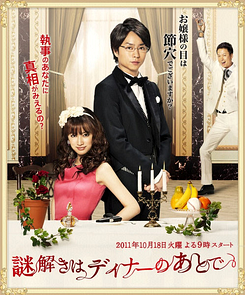

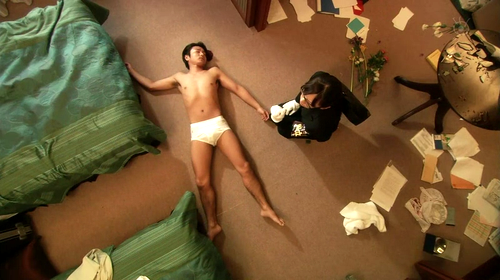
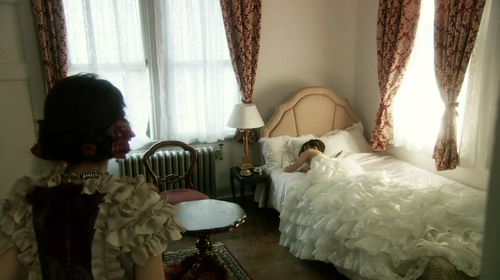
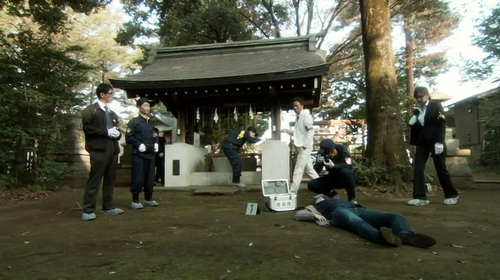
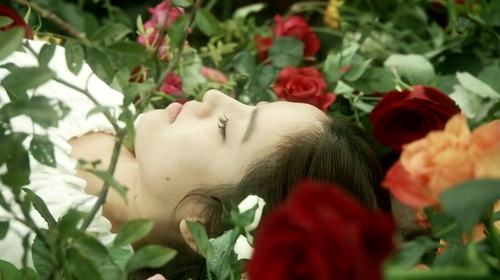
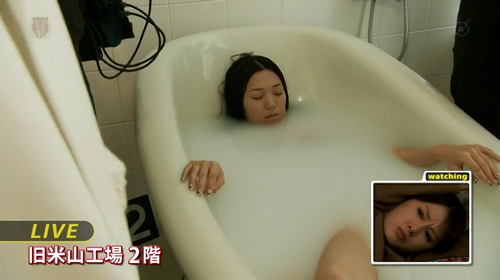
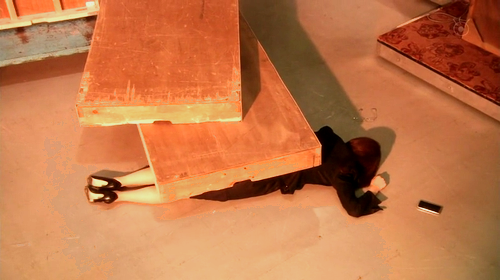
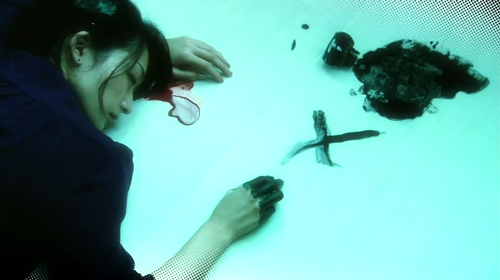
I absolutely loved the series, which really helped me get into the Higashigawa fandom. Like you mention, the comedy is mixed in perfectly with the detective plot (something shared by all of the works I've seen/read/listened to by Higashigawa). As a armchair-detective series, this is really one of the most fun I've ever seen. It's also a highly quotable series, something desperately needed for my own blog XD
ReplyDeleteA drama of Houkago wa Mystery to tomo ni is to start next month by the way!
Oh, and by now my senses have taught me that detective drama featuring Johnny members range from simply OK to awesome. The first two seasons of Kindaichi Shounen no Jikenbo 33pun Tantei, Remote, Mou Yuukai Nante Shinai, etc, etc.
(And a final note: my favorite BGM is definitely 景山のテーマ :3)
「失礼ながら、お嬢様。お嬢様は冗談をおっしゃっているのでございますか。もしそうだとすれば『ウ~ケ~る~』でございます」 was one of my favorites XD
ReplyDeleteDefinitely going to watch that drama as well!
I really can't choose a favorite BGM from that soundtrack. It just fits perfectly and when you listen to it you're reminded of everything awesome the series was composed of.